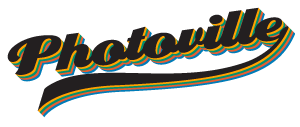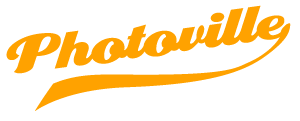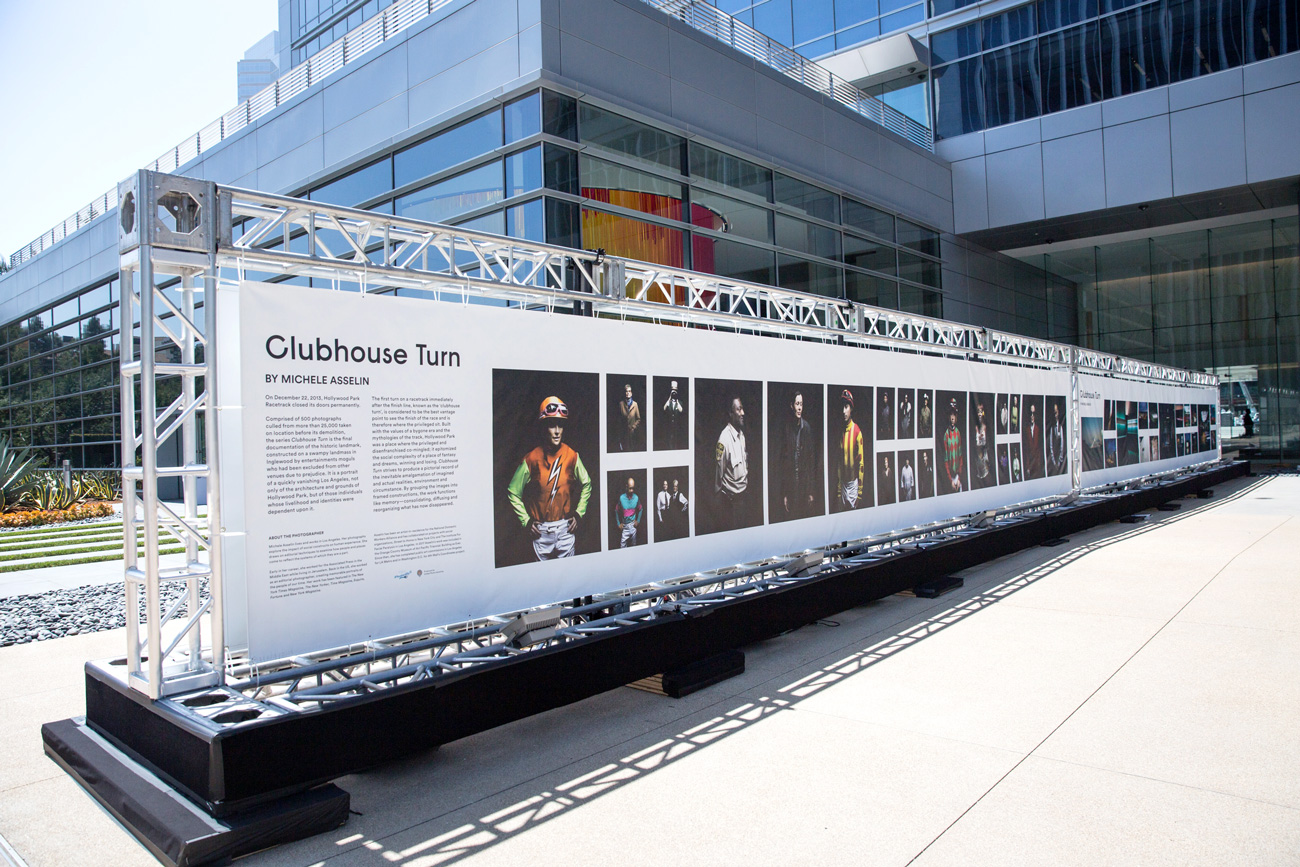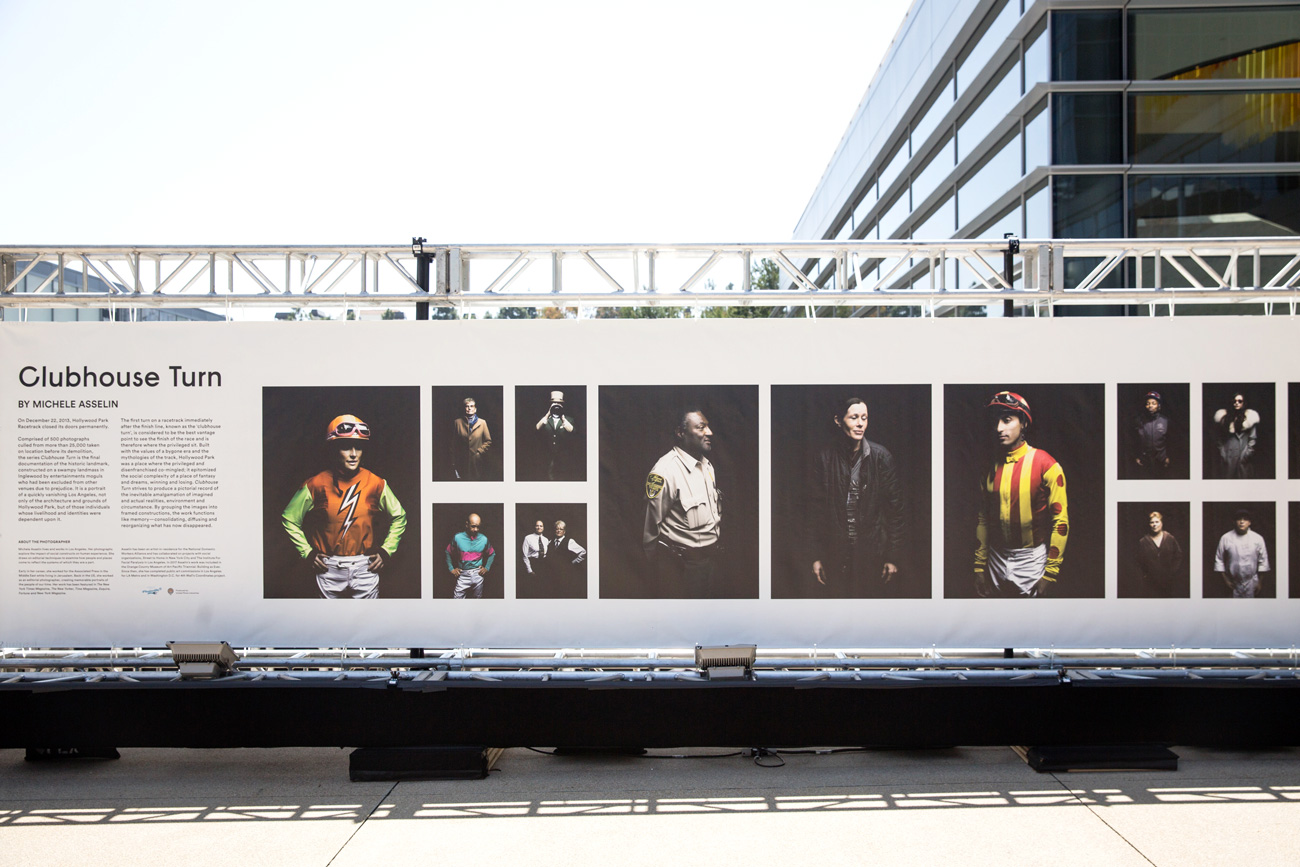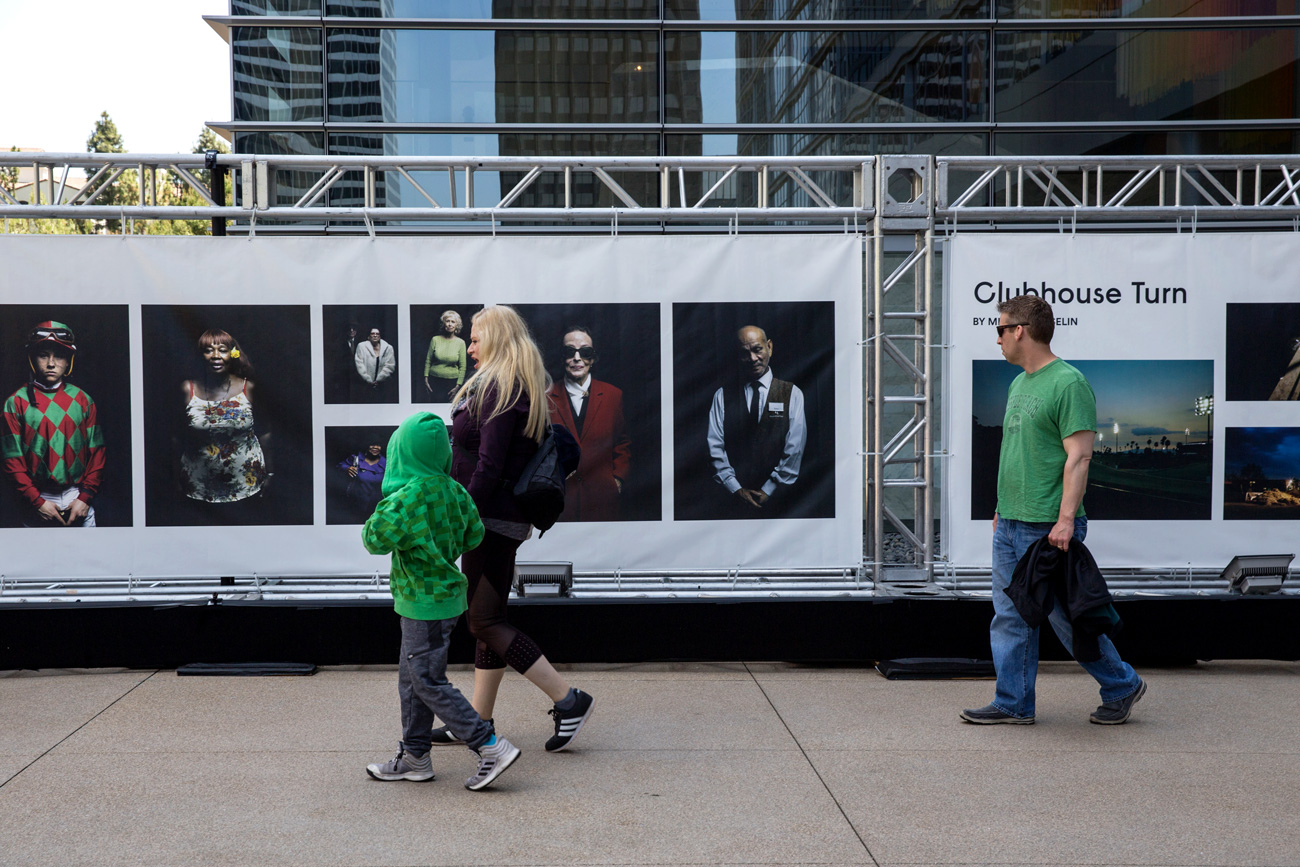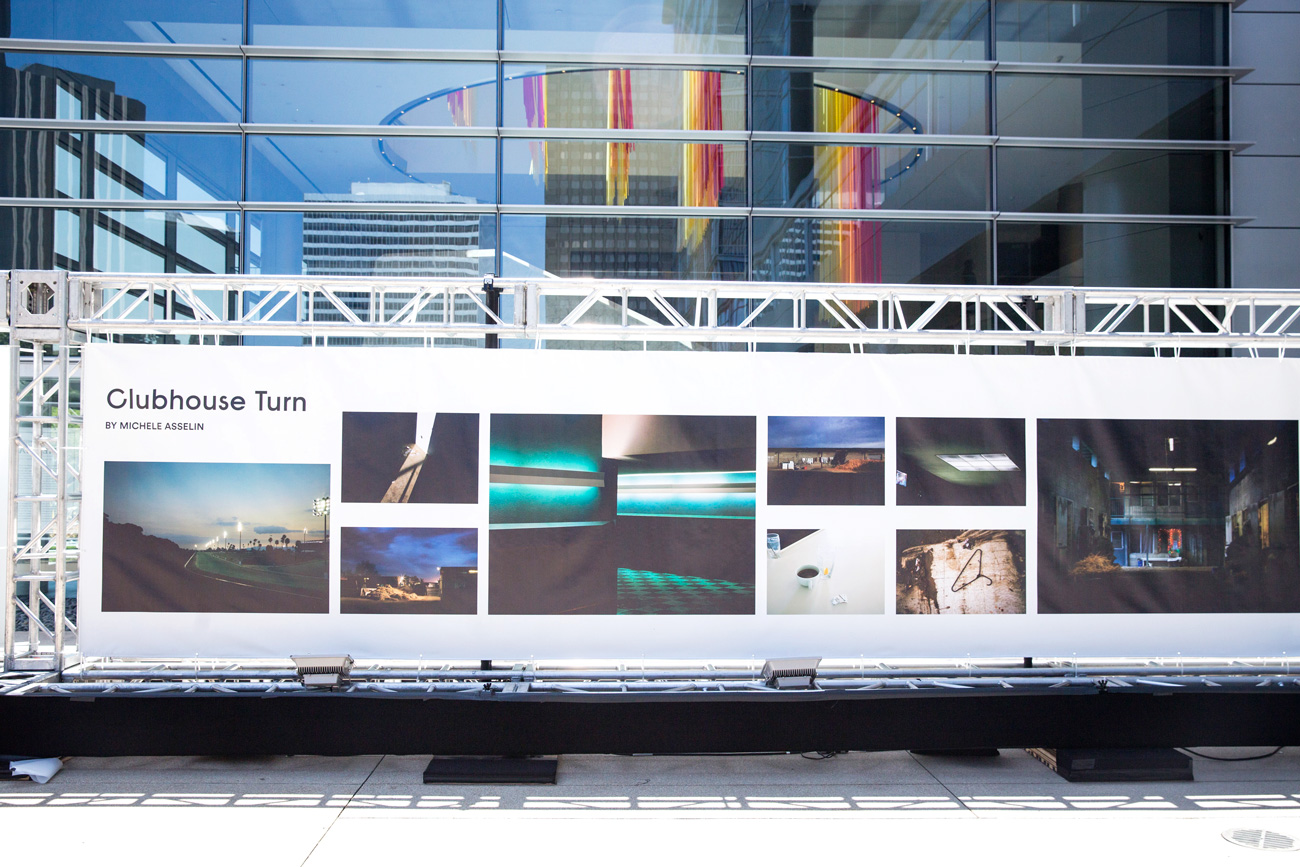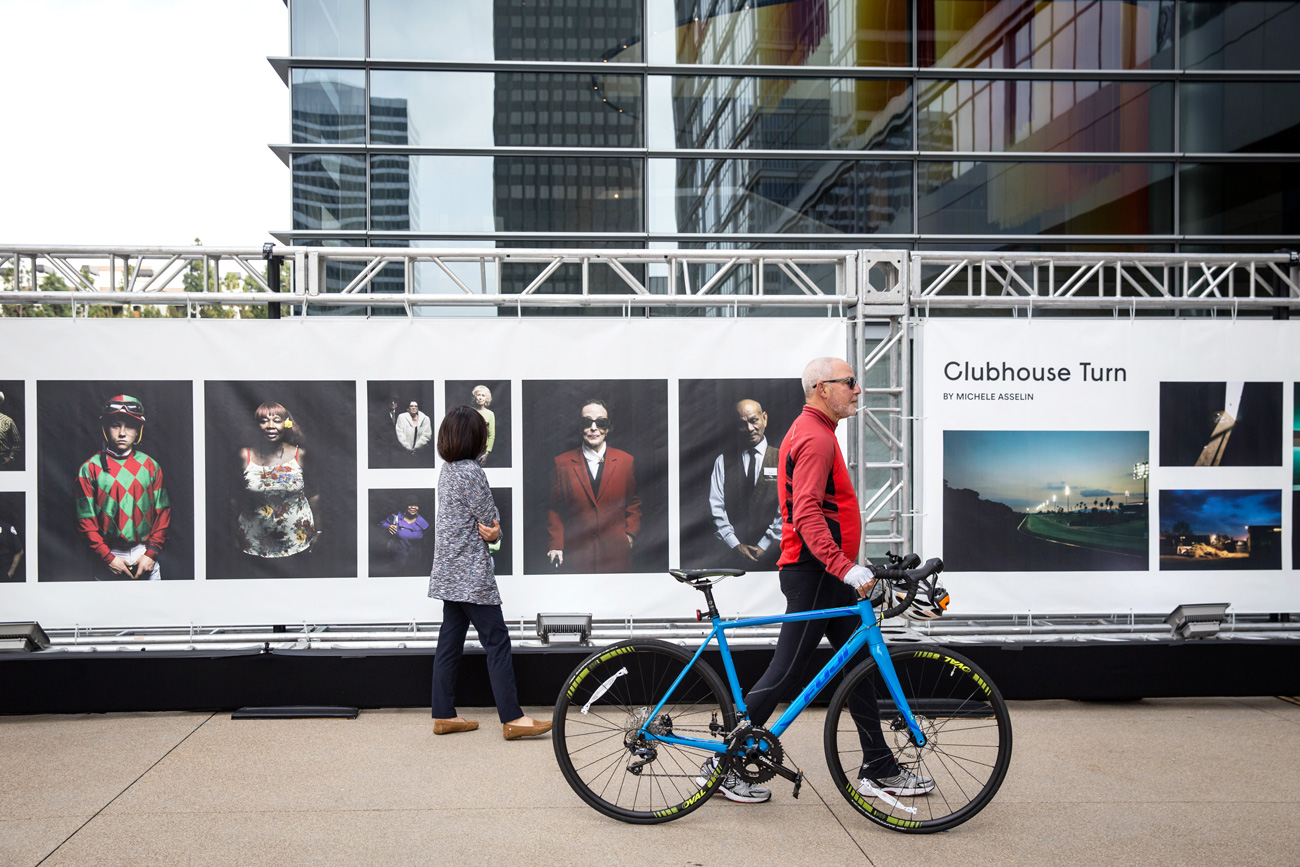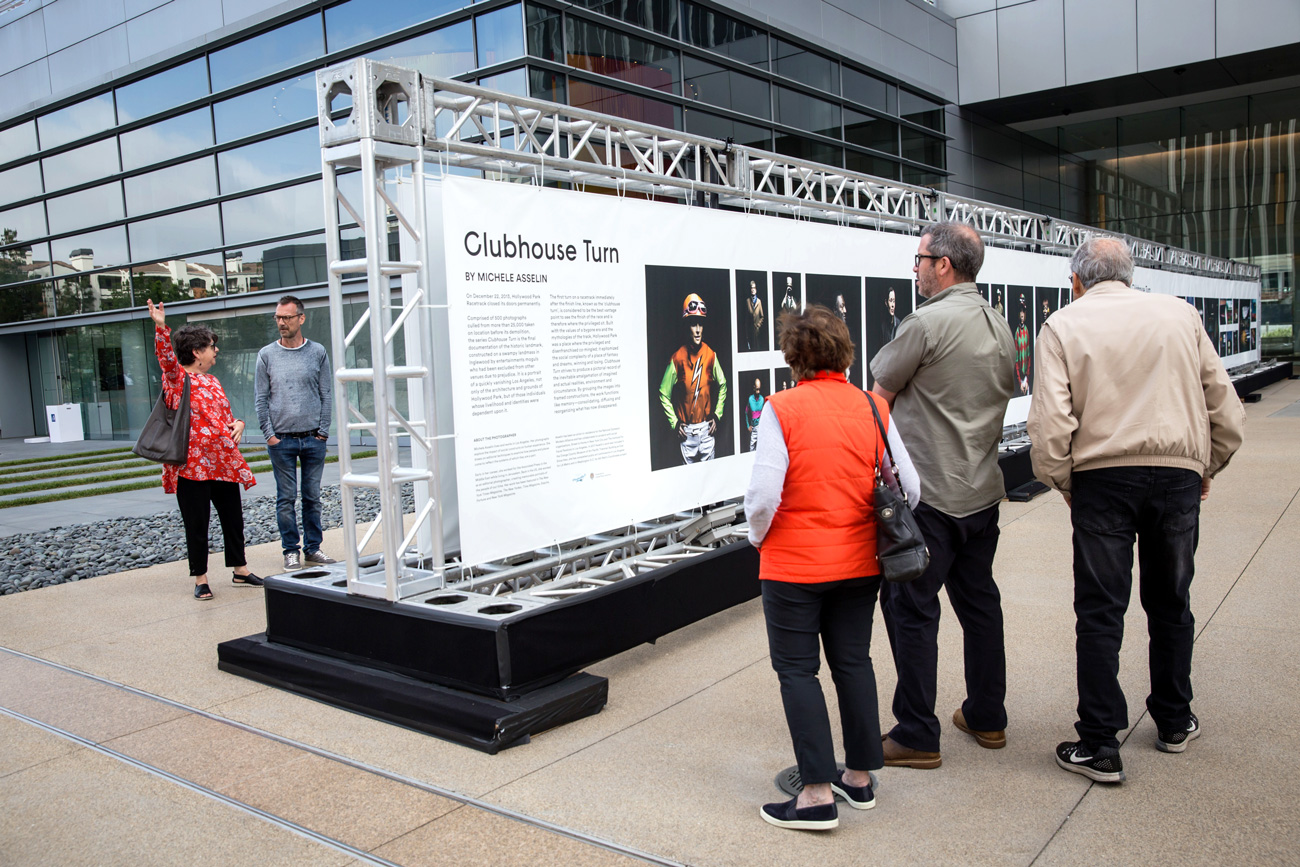On December 22, 2013, Hollywood Park racetrack closed its doors permanently.
Comprised of five hundred photographs culled from over twenty-five thousand taken on location at Hollywood Park racetrack, the series Clubhouse Turn (2013-2016) is the documentation of the closure of an historic landmark from a quickly vanishing chapter in Los Angeles. Hollywood Park, before its demolition, was a portrait not only of the architecture and grounds, but of those individuals whose livelihood and identities were dependent upon it.
Opened in 1938, it was partly destroyed by fire in 1949 and reopened the following year. Hollywood Park has been a staple of the horse racing community and of Los Angeles for the past seven decades. Built with the values of a bygone era and the mythologies of those individuals whose lives were dependent upon the track, Hollywood Park was a place where the privileged and the disenfranchised co-mingled almost equally.
The first turn on a racetrack immediately just past the finish line, also known as the clubhouse turn, is considered to be the best vantage point to view the finish line of the race and is therefore where the privileged people sat. Hollywood Park epitomized the social complexity of fantasy and dreams, winning and losing.
Hollywood Park was conceived and built because of prejudice toward a select group of people. Exclusion from other venues led entertainment moguls to look for investors to help them transform a swampy landmass in Inglewood into what became a legendary racetrack.
Asselin photographed the buildings, the park, and the people who have dedicated their lives to the track’s existence, creating a dynamic, cumulative portrait of the racetrack and a social cross-section of individuals categorized by their relationship to it: the horse owners, jockeys, trainers, managers, employees, stable hands, and track guests, rich or poor.
